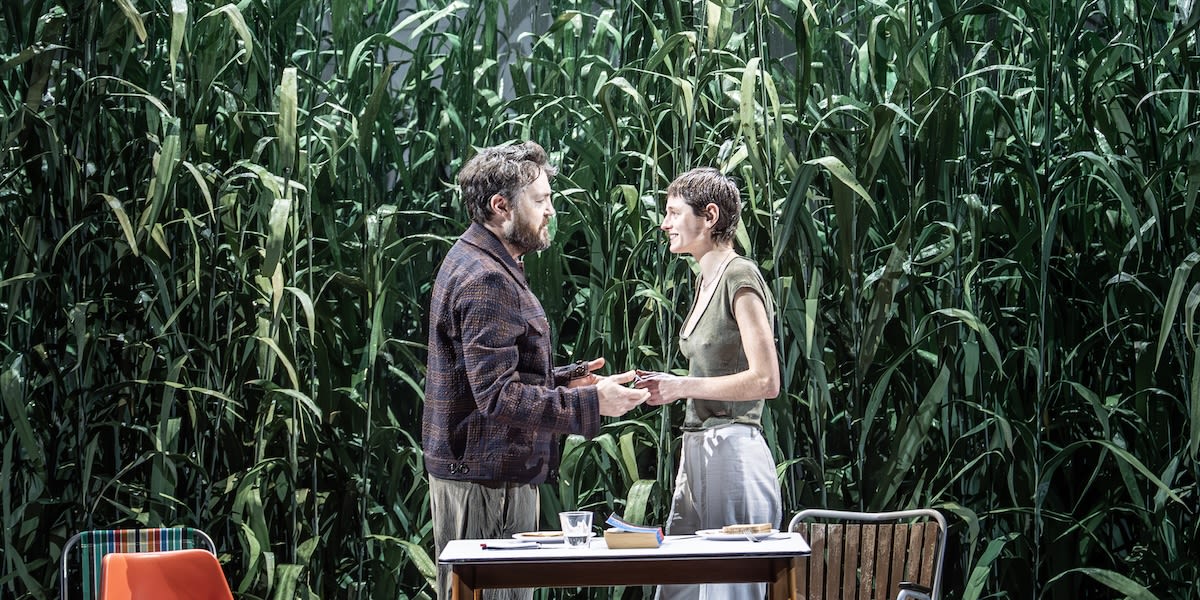
Scenography as a Character: The Role of Set Design in Storytelling

- Written byMagalì Mariani
- Published date 14 May 2025

Post-Grad Ambassador Magalì Mariani explores the Creative Practices in the MA Performance: Theatre Making at Wimbledon College of Arts, with a Focus on Ostermeier’s The Seagull (2025).
This story explores how scenography can operate as an active character within a performance, focusing on how students engage with set design in the context of the MA Performance: Theatre Making at Wimbledon. The Seagull (2025), directed by Thomas Ostermeier, will be taken as an example to show how set design can become a living element as part of a show.
Written by Anton Chekhov, this masterpiece is a theatre evergreen, and for director Thomas Ostermeier, this is his third attempt to modernise this play for audiences. With the help of Duncan McMillan’s pen and an incredible cast of actors, they were able to present a piece of theatre that will stick in our memory for a long time at the Barbican Centre in London.

In this new production, as he has done before, Ostermeir situates the narration outside a specific space or time. The only element that is clear to the audience is the nature, which is stated throughout the piece, not only in the actor’s lines but also in the fantastic set design made by Magda Willi.
The corn field is the core of the piece, where actors lose themselves, love, play and dream. As in the first Ostermeier’s production of The Seagull (2016), the scenography becomes vibrant, alive, and manipulated. In 2016, actors drew the landscape live with fresh paint; this time, they walked through the corn field using it as a space and time portal.

During the MA Performance: Theatre Making at Wimbledon, students learn how the use of scenography can have an impact on the audience and how it can become a character itself alongside text and actors. In an inspiring lecture at the beginning of the academic year, Jane Collins gave students a few minutes to build a set with objects present in the room. The task was to place them so that they gained meaning and presence from the arrangements. The second challenge involved interacting with objects during an improvisation, incorporating sound and movement in a way that enhanced the narrative.
As Bob Wilson states: "in theatre, the visual should never repeat the verbal; when this happens, it is a kind of failure". In The Cambridge Introduction to Scenography (2009) Joslin McKinney and Philip Butterworth state that “architectonic structures, light, projected images, sound, costume and performance objects or props […] are considered in relation to the performing bodies, the text (or score) the space in which the performance takes place and the placement of the audience. Balancing all these elements is what makes a show great".
For instance, in Thomas Ostermeir's The Seagull (2025), light plays a central role in the narration of the characters' feelings, changing with and against them and communicating their emotions to the audience. Jane Collins' mantra at the end of the lesson was, “Do not Double-Do!”, don’t repeat yourself, be present on stage during the improvisation, be bold and think outside of the box.
Discover both productions of The Seagull by Thomas Ostermeir below:
Post-Grad Stories
Post-Grad Stories is a thriving online platform of postgraduate voices. Here you can share thought-provoking experiences, practices, thoughts and articles about what matters to you.
Download the PDF Guide to writing articles for Post-Grad Stories.
UAL Post-Grad Community
Established in 2013, Post-Grad Community is an inclusive platform for all UAL postgraduate students to share work, find opportunities and connect with other creatives within the UAL and beyond. Find out more.